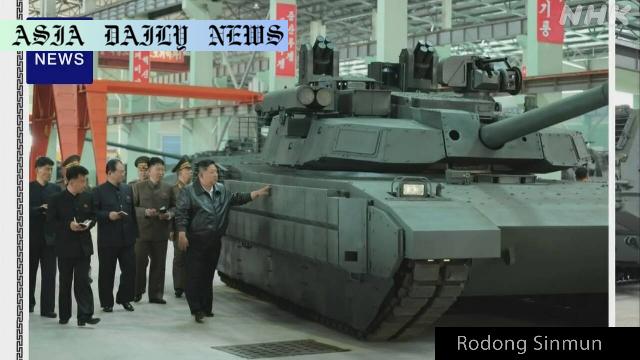Kim Jong Un emphasizes modernization of North Korea’s ground forces by replacing outdated tanks and focusing on advanced capabilities.

Kim Jong Un’s Strategic Vision for North Korea’s Military
North Korea’s leader, Kim Jong Un, is once again in the global spotlight for his proactive steps towards upgrading his country’s military infrastructure. On a recent visit to an undisclosed tank manufacturing facility, Kim focused on the imperative need to modernize North Korea’s ground forces. The visit, highly publicized by state media, showcases the regime’s focus on adapting outdated military assets into advanced warfare technology capable of rivalling global military powers.
The Drive Toward Tank Modernization
The reports highlight Kim’s keen attention to the recent technological enhancements in tank engines and protective equipment at the plant. Rows of tanks and rocket launchers visible from published photos emphasize the scale of production. He commended factory workers for the strides made but was quick to underscore the urgency of replacing tanks from the last century with state-of-the-art machinery. For Kim, this transformation is not just a strategic objective but a mission to safeguard North Korea’s sovereignty and reinforce its dominance in the regional theater.
Aligning Conventional Capabilities with Strategic Goals
While North Korea is prominently known for its missile and nuclear programs, Kim’s tank factory visit signals a calculated pivot towards reinforcing conventional arms. This development cements the country’s resolve to ensure balanced military preparation amid evolving global tensions. Experts believe that this modernization drive could be connected to recent military cooperation between North Korea and Russia—a significant shift that could shape the geopolitical dynamics in East Asia.
Geopolitical Implications of the Military Upgrade
Beyond the technical improvements at the tank factory, this initiative serves as a statement of intent to both allies and adversaries. Kim’s acknowledgment of the role of armored vehicles and tanks in defense strategies highlights a growing blend of conventional and unconventional warfare tactics. The timing of this announcement, amid strained relations between North Korea and multiple Western countries, underscores Pyongyang’s focus on asserting its military independence and readiness.
The Strategic Implications for Regional Powers
Neighboring nations, particularly South Korea, are closely monitoring these developments. With South Korea’s increasing investments in advanced military technologies, North Korea’s accelerated efforts might ignite a conventional arms race on the Korean Peninsula. Furthermore, if Kim’s collaboration with Russia leads to technology-sharing agreements, it could further complicate the existing security architecture in East Asia.
Closing Thoughts
The North Korean leader’s visit signals more than the mere upgrading of tank systems—it serves as a vital reflection of the regime’s broader ambitions. As Pyongyang tightens its focus on army modernization, the world watches cautiously. The implications for international peace and stability remain uncertain, but one fact is clear: North Korea’s military advancements are setting the stage for enhanced regional and global strategic contests.
Commentary
Analyzing Kim Jong Un’s Military Modernization Efforts
The recent reports of Kim Jong Un’s visit to a tank factory have sparked widespread discussions. While it is not unusual for the North Korean media to highlight such visits, the focus on upgrading armored vehicles and tanks signals an intriguing shift in military priorities. This move suggests a concentrated effort to bolster conventional military capacities, a domain where North Korea has historically fallen behind its more technologically advanced counterparts, such as South Korea and the United States.
Strengthening Conventional Forces: A Calculated Move
The focus on tanks and ground force equipment is particularly significant. Although North Korea has gained notoriety for its nuclear weapons program, the emphasis on modernizing ground forces could be a calculated move to present a more versatile military arsenal. For a regime often characterized by isolationist policies, these developments could be a cue to partners and adversaries alike of its readiness to adapt to modern warfare requirements.
Geopolitical Ripples and Challenges
Furthermore, North Korea’s relationship with Russia adds an interesting dimension to this development. If there are underlying agreements for technology sharing, it could elevate North Korea’s conventional military capabilities considerably. Unfortunately, this could also escalate tensions across the Korean Peninsula, especially with South Korea’s continued push for military modernization.
Conclusion
Kim’s steadfast approach to military strengthening poses challenges for regional stability. While it offers intriguing insights into North Korea’s strategic goals, the broader implications warrant serious attention. Continued observation is vital as these developments may redefine security dynamics not only in Northeast Asia but potentially across the globe.


